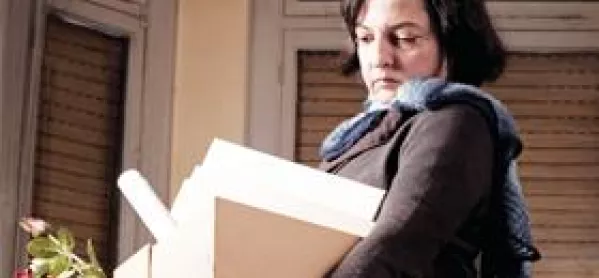Teachers’ protected status starts to crack

Teaching jobs are in increasing danger of losing their special protection, with the issue moving to centre stage this week amid angry exchanges in the Scottish Parliament.
Education secretary Michael Russell rejected suggestions by local authorities body Cosla that teacher numbers should not be a priority in times of ever-tighter budgets.
The comments came hours after the EIS teaching union voiced fears that a deal on changing the national agreement on teacher numbers had already been worked out behind the scenes. This was denied by both Cosla and the government, but the issue nevertheless looks certain to become a bone of contention in the coming months.
Under current arrangements, the failure of any council to help maintain a national ratio of 13.5 pupils to each teacher could lead to its share of money from the government being reduced.
Mr Russell told TESS that although he thought maintaining teacher numbers was important for improving pupil attainment, he had drawn no line in the sand over the issue. With many councils setting their budgets in February, the pressure to find once-unthinkable savings looks set to increase.
Cosla education spokesman Douglas Chapman said that the commitment on teacher numbers would be met in 2014-15. But doubts have been raised about the future, with the recent publication of the Scottish government’s draft budget for 2015-16 causing concern among education bodies.
Mr Russell told the Scottish Parliament’s Education and Culture Committee that he was “willing to have conversations” with local authorities about their ideas for balancing budgets. But he added that if no agreements were reached, the current arrangements on teacher numbers - under which there had been “only a very small reduction indeed” - would continue.
“I am as good as my word on this,” he said. “I would like to do more. I hope local authorities also share my ambition.”
Mr Russell blamed the Westminster government’s austerity measures for depriving him of the funds to increase the number of jobs, and said that Labour-run councils such as Glasgow and North Lanarkshire were responsible for a quarter of the reduction in teacher numbers since 2007.
Labour MSP Neil Bibby, the committee’s deputy convener, pressed Mr Russell on whether he was making a commitment to maintaining teacher numbers. “It’s quite interesting: when I’m raising issues about education in Scotland, the education secretary turns round and says, `Raise it with somebody else,’ ” he said.
Mr Russell replied: “If you do not understand how Scottish education works, I am happy to tell you - the delivery of education is done by local authorities.”
He added: “You should take some responsibility yourself for the financial pressures that exist in Scotland.”
Larry Flanagan, general secretary of the EIS, said that the deal on teacher numbers had been “one of the few positives to arise out of the last [national] agreement on teachers’ terms and conditions”. He accused Cosla of pursuing “an agenda to cut teacher numbers”.
The local authorities body recently indicated in a submission to the education committee that it had reached an agreement with the Scottish government to “begin shifting the focus away from input measures, such as teacher numbers, towards a more useful measure of educational outcomes”.
Mr Flanagan said: “The EIS is concerned about suggestions that some kind of `new deal’ on teacher numbers has already been struck between the Scottish government and Cosla. Any new agreement would require the involvement and approval of teaching unions and this has not occurred.”
The union said that about 4,000 teacher posts had been lost across Scotland since 2011. The most recent government figures, published last December, show that the commitment to maintain the overall pupil-teacher ratio in state schools had been met - there were 13.5 pupils for every teacher - although overall teacher numbers had fallen slightly since 2012, from 51,253 to 51,078.
John Stodter, general secretary of education directors body ADES, told the committee that the harsh financial climate meant it was no longer enough to trim local services. The time had come for “whole-system” changes that applied throughout Scotland, he said.
Cut teacher numbers, squeeze subjects
Pupils may face a squeeze on the number of subjects available to them if teacher numbers fall, according to Paisley Grammar School headteacher Caroline Amos.
Recruiting chemistry and physics teachers has long been a problem, she says, and the full range of social subjects is not being offered in some schools, despite the demands for broader learning made by Curriculum for Excellence.
Ms Amos, who steps down today as president of School Leaders Scotland, believes that employing fewer teachers will affect the implementation of the Wood Commission’s recommendations to give greater priority to vocational subjects. “To broaden the curriculum, particularly in the senior phase, we’re talking about increased numbers of teachers,” she says.
The biggest problem at present is finding enough supply teachers, she adds. “There are probably enough teachers for pupils across Scotland at the moment, but it’s about when there are changes to staffing in a school - it’s difficult to find replacements.”
Keep reading for just £1 per month
You've reached your limit of free articles this month. Subscribe for £1 per month for three months and get:
- Unlimited access to all Tes magazine content
- Exclusive subscriber-only stories
- Award-winning email newsletters



